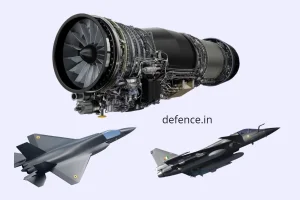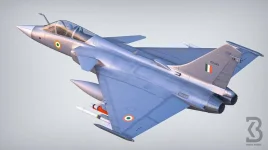- Views: 3K
- Replies: 21
In a landmark move for India's military aviation ambitions, the government has reportedly approved a substantial allocation of approximately ₹61,000 crores for the development of a new engine for its futuristic Advanced Medium Combat Aircraft (AMCA).
This decision signals a major push to equip the Indian Air Force with a domestically produced fifth-generation stealth fighter.
However, the significant financial commitment to a new engine, expected to be developed with foreign collaboration, has renewed a long-standing debate within the nation's defence circles.
Many experts are questioning the contrast between this massive funding and the modest financial support historically provided to the indigenous Kaveri engine program, which received less than ₹2,500 crores over several decades.
The Journey of the Indigenous Kaveri Engine
Initiated in the 1980s by the Gas Turbine Research Establishment (GTRE) under the DRDO, the Kaveri engine project was a cornerstone of India's goal for self-reliance in aerospace technology.It was primarily designed to power the Light Combat Aircraft (LCA) Tejas.
Despite making considerable progress, the program was persistently plagued by technical challenges and a severe lack of consistent funding.
The Kaveri engine ultimately achieved a peak thrust of 49 kilonewtons (kN) in a derivative variant, a significant engineering achievement for India but insufficient for the demands of a modern fighter jet.
Critical hurdles included the inability to develop single-crystal turbine blades and high-temperature resistant alloys, which are essential for achieving higher thrust and efficiency.
Consequently, the LCA Tejas was integrated with the American-made GE F404 engine, and the Kaveri program was effectively sidelined for fighter jet applications.
A New Chapter with International Partnership
The ₹61,000 crore investment represents a fundamental change in India's strategy for developing complex defence technology. The project to power the AMCA will be a joint venture with an international engine manufacturer.India is reportedly in advanced discussions with global industry leaders, such as Safran of France and Rolls-Royce from the United Kingdom, to co-develop a powerful 110-120 kN thrust class engine.
This new engine is planned to incorporate state-of-the-art features befitting a fifth-generation aircraft, including stealth characteristics to reduce radar detection, the ability to 'supercruise' (fly at supersonic speeds without using afterburners), and advanced thrust vectoring for superior manoeuvrability.
The large budget accounts for the immense costs associated with research, development, licensing, and establishing a sophisticated manufacturing ecosystem within India through significant technology transfer.
Analysing the Funding Disparity
The decision to allocate a vast sum for a collaborative project while the indigenous Kaveri was underfunded has drawn criticism.Proponents of the Kaveri argue that with similar funding a decade ago, GTRE could have potentially scaled the engine up to a 75 kN dry thrust, making it a viable option for future combat aircraft.
The reasons behind this strategic pivot are multifaceted:
- Urgent Operational Timelines: The Indian Air Force is facing a pressing need to modernise its fleet and maintain its squadron strength. Waiting for an indigenous engine to mature would significantly delay the AMCA program, a timeline India can ill-afford given the regional security landscape.
- Technological Risk Mitigation: Developing a high-performance jet engine is one of the most complex and expensive technological endeavours. By partnering with an established foreign manufacturer, India mitigates the immense risks and uncertainties associated with developing such technology from the ground up.
- Past Budgetary Constraints: During the crucial development phase of the Kaveri engine in the 1990s and 2000s, India's economy was smaller, and the defence budget was stretched thin across many competing priorities. A high-risk, long-term research project was deemed less critical than procuring operational equipment to meet immediate threats.
The Path Forward: A Hybrid Approach
While the AMCA engine project proceeds with a foreign partner, the expertise gained from the Kaveri program is not lost.The Kaveri engine is being adapted to power India's indigenous unmanned combat aerial vehicle (UCAV), the Ghatak. This ensures that the decades of research and investment continue to serve India's defence needs.
For future self-reliance, it is critical that the AMCA engine agreement includes a comprehensive Transfer of Technology (ToT) clause. This will allow Indian scientists and engineers to master key technologies, paving the way for truly indigenous engine development in the future.
Experts also advocate for creating a robust ecosystem by investing in world-class testing infrastructure and fostering greater collaboration between public-sector units and private industry giants, aligning with the national mission of 'Aatmanirbhar Bharat'.


